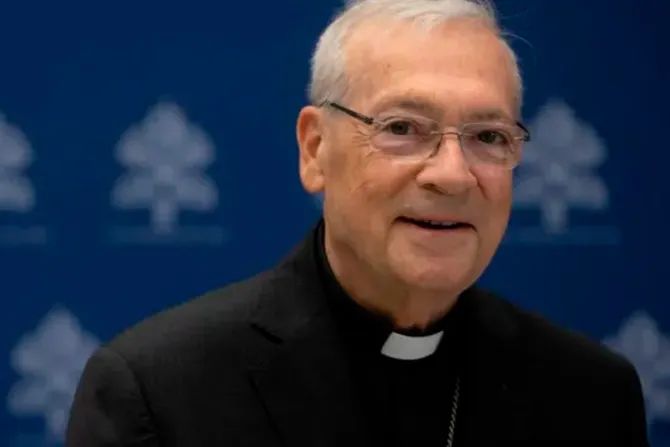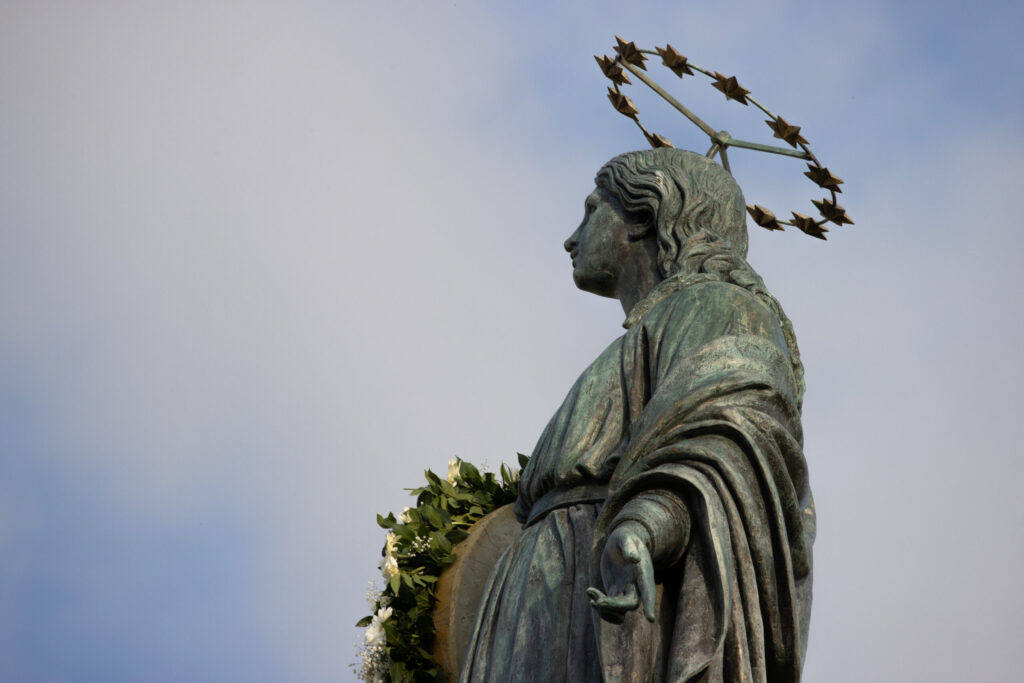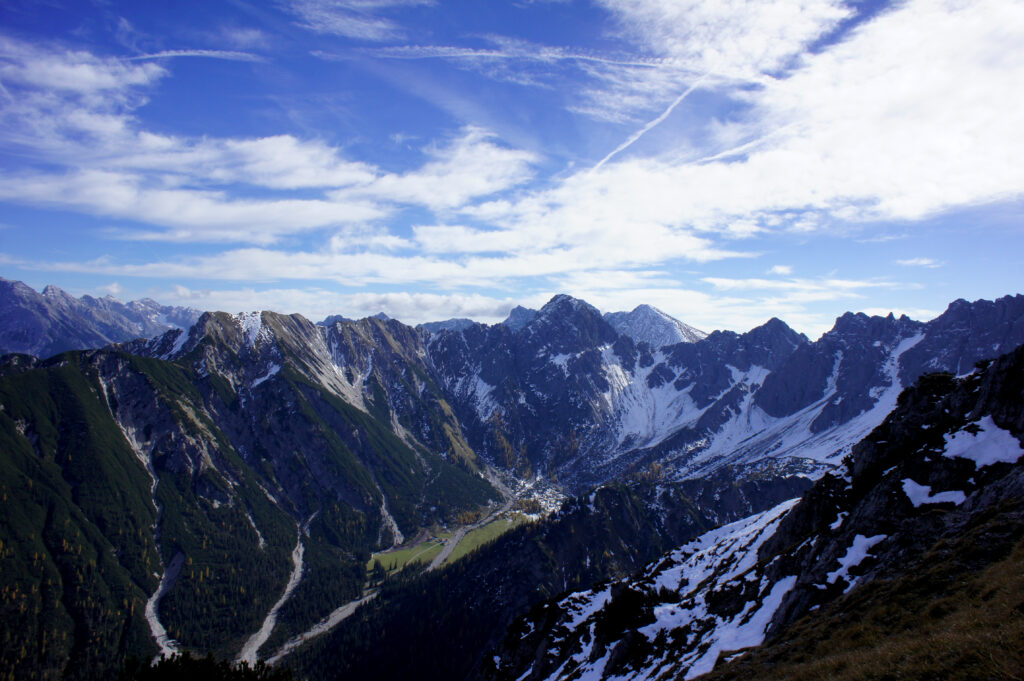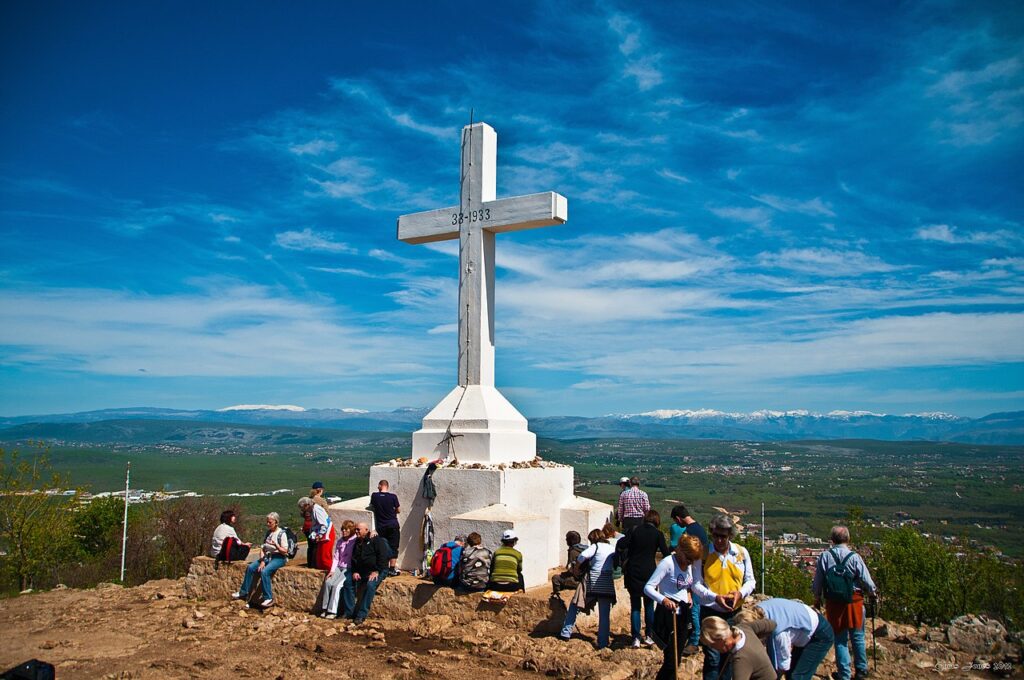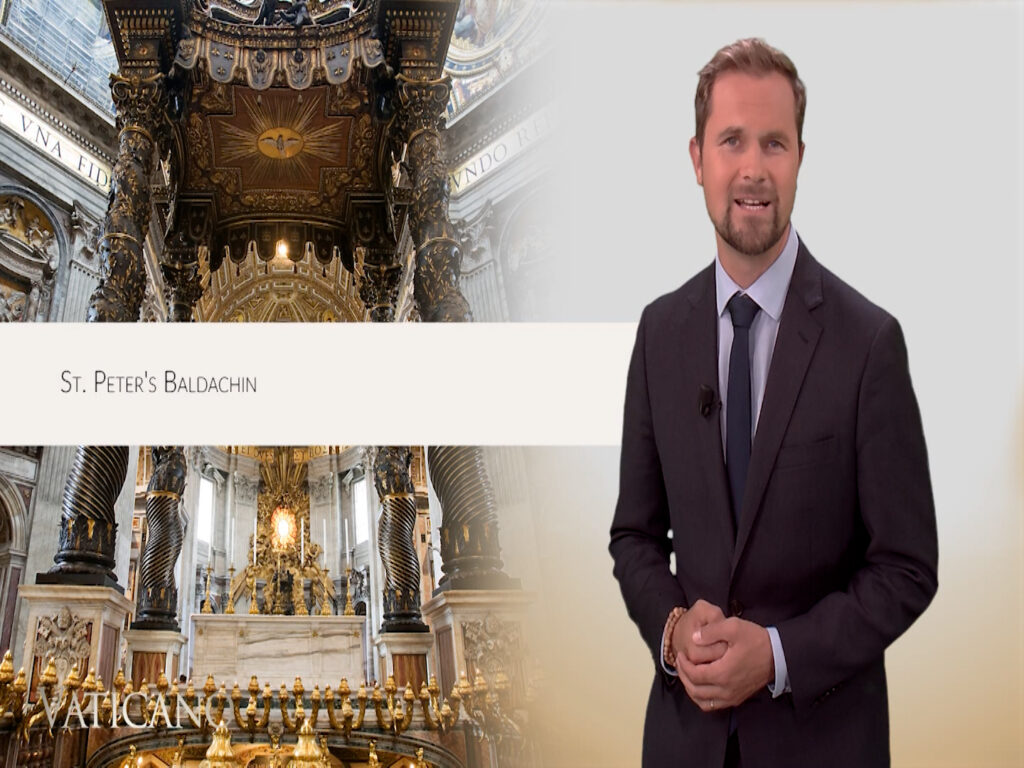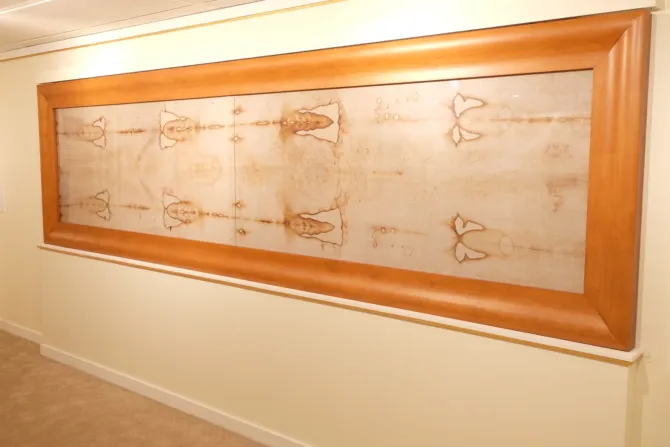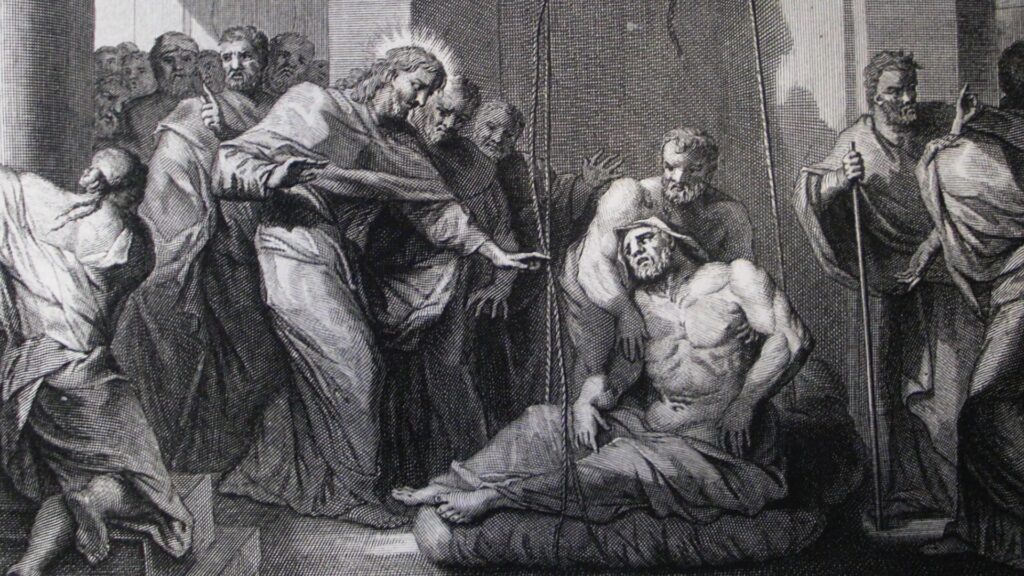ACI Digital, Oct 28, 2023 / 08:00 am (CNA).
The Synod on Synodality convened by Pope Francis has once again brought to the fore the clash between internal currents of the Church in dispute since the Second Vatican Council.
The accusations of manipulation in the name of a worldly agenda on the one hand and the pressure for the ordination of women, the end of mandatory priestly celibacy, and the alteration of Catholic sexual morality to accept homosexuality on the other came to light as soon as the 16th General Assembly of the Synod of Bishops convened at the beginning of October.
“Certainly we cannot ignore the world, and that’s why it’s a mistake to entrench ourselves in the past. However, we must never forget that we are in the world, but we are not of the world,” Cardinal Agostino Marchetto explained to ACI Digital, CNA’s Portuguese-language news partner.
“We cannot subvert the doctrinal and moral tradition of the Church to please the world. We look at the cross of Christ — glorious, yes, but a cross nonetheless,” he noted.
Created a cardinal by Pope Francis on Sept. 30, the Italian cardinal is, according to the Holy Father himself, “the best interpreter of the Second Vatican Council.” For the cardinal, “it is necessary to reinforce the internal dialogue in the Church between the different positions, between those who exalt exclusive fidelity to tradition and those, on the contrary, who seek to adapt to the world.”
ACI Digital recently had an opportunity to interview the cardinal to gain his perspective on the synod in light of Vatican II.
ACI Digital: Some see in the Synod of Synodality an opportunity to finally implement the decisions of the Second Vatican Council, especially on collegiality in the Church, which were supposedly suspended during the pontificates of John Paul II and Benedict XVI. How do you see the role of the synod in light of the hermeneutics of the Second Vatican Council in continuity with the tradition of the Church?
Marchetto: The judgment on the suspension of the exercise of collegial ministry in the Church is easily dismantled if we think of all the Synods of Bishops held during the pontificates of John Paul II and Benedict XVI. In his famous Dec. 22, 2005, address to the Roman Curia, Pope Benedict XVI noted that, in fact, the Second Vatican Council represented continuity and not discontinuity with Catholic tradition. And all the conciliar and postconciliar pontiffs have echoed this.
Regarding the two poles of continuity and discontinuity, I prefer to go further, pointing out that the first alternative proposed by Pope Benedict XVI is between rupture in discontinuity and the reform-renewal in the continuity of the Church as a single subject. It is precisely this combination of continuity and discontinuity, but not rupture, at different levels, that constitutes the true nature of authentic reform.
Continuity then refers to tradition with a capital T, which, together with holy Scripture and the magisterium, form the “genius” of Catholicism, as the Protestant [theologian Oscar] Cullmann said. Fidelity in this sense is a source of fruitfulness that is renewed, taking into account the signs of the times, God’s today, the time in which we live, the “Sitz im Leben” (position in life), which is not a new revelation. I, therefore, see the current synod from this perspective.
Important figures of the Church participating in the synod have defended the idea of a morality less based on laws and truth and more on pastoral care, with monitoring and discernment of each particular case. It is also common to hear the idea that the human sciences now have a more important contribution to make to the understanding of human sexuality than, for example, classical theology, or simply theology. These ideas echo an interpretation of Vatican II according to which the hegemony of “theology” was overcome there, understood as an isolation of the dimension of doctrine and its abstract conceptualization, as well as that of “juridicism” in morality. Is this a strong position among the participants in the synod?
I believe that whoever reads me is convinced of the importance of the Second Vatican Council and its doctrinal, spiritual, and pastoral value, so much so that it can be said that it is an “icon” of the Catholic Church itself; that is, of what in a special way, Catholicism is constitutively: communion. Communion also with the past, with the origins, identity in evolution, fidelity in renewal.
What was an extreme position at the Second Vatican Council, in its so-called “majority,” increasingly eager to impose its own point of view, deaf to the “calls” and the “sewing” work of Paul VI, has achieved, after the council, to monopolize, at least for a certain time, the interpretation of the “event,” rejecting any different interpretation as anti-conciliar.
But to answer correctly, let us return to the initial thought, the one that considers the Church, like any living organism, in continuous growth, internally and externally, while remaining itself. Now, such a development certainly involves multiple problems, which concern doctrine, worship, morality, discipline, and the apostolate. Generally — as we know — its solution is provided by the ordinary magisterium of pastors, assisted by theologians united to the entire people of God, in communion with it. Sometimes, however, the complexity of the matter or the seriousness of historical circumstances suggest extraordinary interventions.
Among these must be considered the councils, which promote, in fidelity to tradition, doctrinal development, liturgical and disciplinary reforms, and apostolic options, also taking into account the needs of the times (the famous “signs of the times” that do not constitute a new revelation). The synods appear, from this perspective, as milestones on the journey of the Church through history.
Well, now the idea arises that synodality is not only the expression of an episodic event in the life of the Church but that it permeates it all, transforming it into synodality, asking the people of God to “walk together,” in synodal consensus as an expression of the “catholic,” for us the “incarnation” of the combination between tradition and renewal as it occurred in the Great Vatican Synod [as Marchetto calls the Second Vatican Council].
The soul of the truth of the opportunity and the importance of consensus remains as the correct way to proceed conciliarly and synodally. Their absence or inability is, in fact, something that is paid for dearly, as history teaches. In fact, the example of many important councils — from Chalcedon to Vatican II, passing through Trent — that worked laboriously to reach consensus is a testimony to its great importance and its character as a sign, especially in the sense that the truth is not decided through voting but is attested through consensus.
I don’t think there are many in this synod who consciously adhere to such a distorted view of the Great Synod, as I have always called the Second Vatican Council, or the one that is ongoing. If the Holy Spirit speaks, I am at peace, especially because it is Pope Francis, successor of Peter, who holds the keys.
And what is the path to reaching Catholic consensus?
Knowing the riches and contradictions of modern culture, the aspirations, hopes, joys, and sorrows, the disappointments and difficulties of contemporary man, Paul VI, following the inner impulse of charity, tried to immerse himself in them. He was an assiduous evangelizer and promoter of dialogue with all men of goodwill: with separated Christians, with non-Christians, with nonbelievers.
“The Church must dialogue with the world in which it lives; the Church becomes a word; the Church becomes a message; the Church becomes a conversation,” Paul VI testified. Later he expressly stated: “It is especially up to us, pastors of the Church, to seek with boldness and wisdom, in full fidelity to its content, the most appropriate and effective ways of communicating the Gospel message to the men of our time.”
This is the dialogue of salvation, which finds its transcendent origin in the very intention of God and has as its characteristics clarity, meekness, trust, and prudence. “In dialogue, conducted in this way, the union of truth with charity, intelligence, and love is realized.”
Paul VI strongly affirmed that dialogue must remain immune to relativism, which undermines the immutable doctrine of faith and morals: “The concern to draw closer to our brothers and sisters must not translate into an attenuation, a diminution of the truth”; “our dialogue cannot be a weakness in the face of commitment to our faith”; “we cannot compromise the theoretical and practical principles of our Christian profession.”
Anyone who reads us can perceive the links that exist here, speaking of synodality, with Vatican II, with its progress, with primacy, with collegiality, with the search for dialogue within the Catholic Church, with what provides constant and fervent consensus, with the continually renewed and fulfilled desire that renewal and tradition dialogue with each other, and that there is a connection between the old and the new, between synodality, collegiality, and the primacy [of the pope].
Vatican II saw itself sanctioning the theological development that had occurred and translating it into pastoral action, in response to the needs of the times, in continuity with doctrine. And now this synodal enterprise, which I have tried to present in its context.
What can we expect from the synod on the “path of consensus and dialogue to combine tradition and renewal” as already defined by the Second Vatican Council?
The council was not a rupture in history but a renewal in the continuity of the one Catholic Church. All the popes accepted this interpretation. However, we Catholics, as it often seems, are easily up in arms against each other in this regard, and that’s not right, it’s not Christian. On the other hand, it is necessary to reinforce the internal dialogue in the Church between the different positions, between those who exalt exclusive fidelity to tradition and those, on the contrary, who seek to adapt to the world.
We certainly cannot ignore the world — and that is why it is a mistake to entrench ourselves in the past — but we must never forget that we are in the world and we are not of the world. We certainly cannot subvert the doctrinal and moral tradition of the Church to please the world. We look at the cross of Christ, glorious yes, but a cross nonetheless.
This story was first published by ACI Digital, CNA’s Portuguese-language news partner. It has been translated and adapted by ACI Prensa/CNA.

